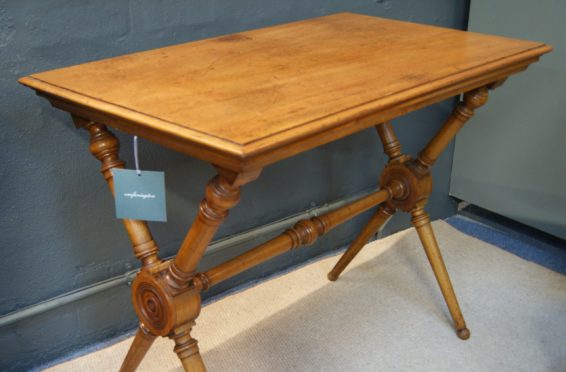Much of the furniture designed for the smaller-scale Victorian home comes under the broad heading ‘occasional’ – in other words, furniture which could be moved around to suit the activities of the household.
A games table could be folded and moved to a quiet corner. A tilt-top table, after tea, would be flipped-up and pushed against a wall. A drop-leaf table would be raised for supper like a ship setting sails, but would have taken up little space when not in use. Brass or porcelain casters, fixed or swivel, allowed such versatile furniture to be pushed to the side of a room.
Such space-saving designs included the folding cross or ‘X-frame’ transportable furniture used in military campaigns. Yet X-frames were also in everyday use, from Roman-period X-framed chairs to Scandinavian furniture of the 1950s, notably Danish X-framed tables in teak and other hard-wearing woods.
So to the Scottish Antique & Arts Centre at Abernyte and a super ‘occasional’ table occupying its own quiet corner on the Onefarington retail unit.
This was an outstanding example of a mid-19th Century X-frame mahogany serving table. Labelled as ‘Scottish’, with wonderful colour and patina, it seemed to glow with good health.
Its turned, tapering legs, linked at roundels by a matching stretcher, reminded me of a folding butler’s tray, the rectangular X-frames which were wheeled into dining rooms before shallow, galleried serving tops bearing the hot food of the day were placed upon them.
Decorative and ‘occasional’, as required for the downsized Victorian home, the table was on offer at Abernyte for £675.
Scottish X-frame table, £675 (Onefarington, at the Scottish Antique & Arts Centre, Abernyte).










